Хаас за Малайзия
Ромен Грожан:
Singapore was an excellent example of why you never give up. Can you talk about how you overcame the struggles of Friday and Saturday to earn a points-paying finish on Sunday?
I think the conditions helped us quite a bit with the rain before the start, and the tire choice of inters for the first stint. It was pretty tricky over the first few laps, especially remembering qualifying in Monza, but I just went through that time. Then we went to slicks, maybe a lap too late, but anyway, the timing wasn’t too bad and I just pushed with the car. The car was working pretty well in the race – better than it was in qualifying. I then got stuck behind (Lance) Stroll and couldn’t really overtake. Conditions, the right tire choice, a good pit stop at the right time – that all gave us the opportunity for taking points.
When you have a difficult day on the track, you refer to the data you’re able to go through that evening to develop a better plan for the next day. What kind of data are you looking at and what changes does it tell you to make?
There’s a lot going on after a tough day, or a day where the car is maybe not where you want it to be. Of course, you’re trying to get the best of the aerodynamics, the tires, engine, suspension, driving – all together. Sometimes little changes, but a good small change, can make a big lap time difference. That’s what we’re always looking for on a Friday evening. Obviously, once qualifying is done, you don’t have much more choice for the race, but you try to look at what you can do better with what you’ve got.
When chasing a problem with the car, particularly in regard to balance or handling, how can solving one problem lead to the creation of another?
Racing is compromise. Very rarely you’re going to have a car that’s fine in every single corner of the track. You have to assess which corner will cost you the most lap time and try and resolve that one. It may not help other places, but the idea is to focus on where you can gain the most lap time.
Do you sometimes feel that finding the car’s optimum handling package is akin to balancing on a razor blade, where one moment you have it and the next you don’t?
It is very sensitive, especially when a few problems come together like if you don’t have the right balance, or you’re not in the tire window, and maybe you don’t have good downforce. It’s like the equation will never work – you’re always missing a part of the puzzle.
How important is the human element in making your racecar better – from your role behind the wheel to the interaction with your engineers?
It is very important. We’re not robots and neither are the engineers. We try to translate our feelings into words, and then those words have to be translated into data or mechanical numbers. Those numbers come back to you with the feeling you get back in the car. Sometimes data will suggest one thing, but you’re feeling something else. It’s where all the human relationships – between the driver, the engineers and the mechanics – are very important. You have to develop and find the solution.
What do you want to feel inside the racecar to give yourself the confidence to push its limits?
You want to know what’s going to happen. Basically, you want to know that if you do something, what you’re expecting is what you’re going to get. When you get that – I wouldn’t say it’s easy to go fast – but it’s much faster. For example, if you enter a corner a bit too quick, you’re going to have a bit of oversteer, but if it’s the same thing every lap, you can try to find the right limit and the right approach and trust the car is not going to do something silly. While if one lap you go in and its understeer, then the next lap you’re going to drive to counter the understeer, but then if it’s a massive oversteer, you’re going to make it twice as worse. You really want to expect what you’re expecting.
Despite all the technology inside your racecar, it’s still connected to the racetrack by four patches of rubber. How important is it to find a tire’s proper working range in order to know the changes made to the chassis were, in fact, correct?
It is key, and it’s something we’re improving on and learning. It’s where experience is very valuable. Of course, having only a year and a half as a team, we don’t have the experience. We’re working very hard to understand the tires, and yes, sometimes it’s frustrating to spend so much time trying to get it right, but it’s the number one key.
Singapore, site of the last grand prix, was hot. But Malaysia is even hotter. With Singapore preceding Malaysia, does it help prepare you better for the heat and humidity?
I’m fine with it, generally. Singapore was tough, but it wasn’t too tough. Malaysia will be physically harder, but we’re going to get more cooling inside the car because of the longer straights. I’m not worried.
In Singapore, all of your track time came either at dusk or at night. In Malaysia, it all happens in the heat of the day. Is Malaysia a more physical race because everything takes place under the glare of the sun?
It is because of that and because there are more fast corners. Fast corners are where you get the big g-force, and that’s what we have to fight inside the car.
The weather in Malaysia is predictably unpredictable, with heavy downpours late in the afternoon commonplace. Do you go into the weekend like you do at Spa-Francorchamps, where you know a lap around the circuit can suddenly change due to weather?
Yes, we’ve had that a few times, where it starts to really rain heavily on one part of the circuit – you can be on slicks with everything going well then all of a sudden it’s wet. We know it’s tropical conditions and that it can happen on any day. You just need to get the wet tires on and go.
The energy loads are high at Sepang. The tires take a beating, but so do the drivers. Between the heat and the g-forces sustained over the course of a race, how physically demanding is the Malaysian Grand Prix?
I think it’s pretty much the hardest race of the year. Singapore is a slower track with slower corners, whereas Malaysia has high speed with high loads. Again, it’s a great challenge, a great track, and when you have a good car, it’s an amazing experience.
When it’s hot and the race is physically draining, how important is mental preparation prior to the Malaysian Grand Prix?
It’s always very important. Of course, when you are physically suffering as well, it’s more important to stay calm. It’s like riding up a hill and someone’s trying to chat to you or your phone’s ringing nonstop. You can get fed up with that very quickly simply because you’re tired. You just need to be ready for every race.
Where are the overtaking opportunities at Sepang?
There are plenty. There are some big straight lines with good top speed, and then some big braking zones. It’s a track with high tire degradation. Overtaking is really good fun at Sepang.
The 2017 Malaysian Grand Prix marks the last Formula One race at Sepang. In the 18 grands prix the track has hosted, is there one that stands out? If so, why?
I’ve always loved the track. It’s been my favorite track for a very long time. I just love the layout. There’s no one particular race that I remember significantly, except maybe (Fernando) Alonso’s race when he won and couldn’t stand on the podium because he was completely dehydrated. For me, I just love the track.
Do you have any milestones or moments from your junior career that you enjoyed at Malaysia?
I remember GP2 Asia in 2008. I had the pole position in Sepang by around a second or something like that. It was a very fast time. I stalled on the grid, came back from last and almost climbed back up to first, but I was pushed out by a backmarker. I finished ninth, while the top-eight were then reversed on the grid for the second race. I started the second race from ninth and finished second. It was a weekend where I should’ve won both races but, unfortunately, didn’t. I love the track though.
What is your favorite part of the Sepang International Circuit?
I’d say turns five and six – very high-speed corners.
Describe a lap around Sepang International Circuit.
Big braking into turn one – it’s very similar to China, both turns one and two. Long right-hand side corner, then a left hairpin. You need good traction. Then you have a long straight line going to turn four. Big braking, 90-degree right-hand side corner going up a crest. Then you have very high-speed corners going through turns five and six, almost flat out. Then it’s a small brake for the double right-hand turn eight. It’s a mid-speed corner with very tricky traction going through to the next turn, another left-hand side hairpin. The right corner is very long. It’s quite good fun when the car is well balanced. You then have a bit of straight line going to turns 12 and 13. Flat-out left corner, big braking, with g-forces from taking the corner. Then it’s a long straight line approaching the final corner. Big braking to carry minimum speed, then it’s full throttle as early as you can to finish the lap.
Кевин Магнусен: When you have a difficult day on the track, you refer to the data you’re able to go through that evening to develop a better plan for the next day. What kind of data are you looking at and what changes does it tell you to make?
We’re looking at the telemetry from the car, trying to spot any balance issues. We’re seeing if the data is aligned with my own feeling and feedback. There’s lots of discussion. In the end, you reach a solution, or at least a direction, to go to try and fix the issues.
When changes to the car are made, how big or small are they, or is it a lot of little changes that tend to add up to a lot?
It could be anything. It varies depending on what your issue is. Sometimes the change is a massive one, and sometimes it only requires a small change to something like the rear camber, or a diff setting.
Do you sometimes feel that finding the car’s optimum handling package is akin to balancing on a razor blade, where one moment you have it and the next you don’t?
Yes, it’s like that.
How important is the human element in making your racecar better – from your role behind the wheel to the interaction with your engineers?
It’s very important. There’s no theoretical best way to set up a car. It has to suit the driver. You need to know what you want as a driver, as well as what you need from the car. Then, obviously, you need to work hard with your engineers and your team to try to get the car to behave as you want.
What do you want to feel inside the racecar to give yourself the confidence to push its limits?
Most drivers are generally the same in what they need. Some drivers like a bit less, or more, of things like understeer or oversteer. Generally, you want overall grip, but then you want to have stability to be able to push the car and brake later in order to carry the speed through the corners and get early on power. Most of this requires a good rear end. Obviously, if you can’t turn the car, if you can’t rotate the car mid-corner because you’ve got too much rear grip, then that’s no good either. So you need that front-end grip as well. You find yourself, nine out of 10 times, saying that the car is unstable on your way into a corner, then understeer on mid-corner, and then oversteering on exit.
Singapore, site of the last grand prix, was hot. But Malaysia is even hotter. With Singapore preceding Malaysia, does it help prepare you better for the heat and humidity?
I don’t really feel like I’m better prepared because of Singapore. We only spend a short time in Singapore. To acclimatize to the weather, you need to be in those conditions for a lot longer time than the four days we spend. So, it doesn’t make a big difference.
In Singapore, all of your track time came either at dusk or at night. In Malaysia, it all happens in the heat of the day. Is Malaysia a more physical race because everything takes place under the glare of the sun?
It’s pretty hot there. What makes it easier is that you’ve got longer straights to help you recover and get some wind on your body. In Singapore, everything is very low-speed and you’re constantly working on the steering wheel, braking, then getting back on power. You work a lot harder in Singapore than you do in Malaysia. The temperature is worse in Malaysia but, somehow, the race is a little bit easier.
When it’s hot and the race is physically draining, how important is mental preparation prior to the Malaysian Grand Prix?
I don’t really do anything particular for mental preparation. It’s physical training, then your mental performance improves accordingly.
Where are the overtaking opportunities at Sepang?
Into turn one is a good one. The hairpin after the double right-hander is another one. The last corner as well, but usually it’s into turn one.
The 2017 Malaysian Grand Prix marks the last Formula One race at Sepang. In the 18 grands prix the track has hosted, is there one that stands out?
I’ve always enjoyed the track. It’s not a bad circuit. It’s got some high-speed corners and that’s always what drivers enjoy. I’m a little bit sad to see it go as it’s been on the calendar for so long.
What is your favorite part of the Sepang International Circuit?
Turns five and six, as they’re quite quick, and then seven and eight, the double right-hander as well. Any high-speed corner in a Formula One car is always exciting.
Describe a lap around Sepang International Circuit.
Hot, humid and fast.
Гюнтер Щайнер: You scored points in Singapore, yet dropped to eighth in the constructor standings as Renault scored even more points to leapfrog Haas F1 Team. Is seventh the team’s goal this season, or are resources better spent on preparing for next year?
We decided a long time ago that we would start focusing fulltime on the 2018 car in August, and we started partially on our 2018 car in March. You have to plan it well because it’s so complex, but everyone else is working on their 2018 car as well. If you were to develop something at this point for the current car and you put it into production, when it comes out it would be too late. If you develop something now, you won’t get it to the racetrack for this year. We still want to achieve seventh, or the best result we can. We haven’t given up.
Singapore was one of the worst tracks for us, including Hungary. We knew we’d be weak on those tracks, and we were. We got away with two points, so we got away better than we expected to. Hopefully, at the other tracks, we won’t be this far behind the midfield. In the midfield, anything and everything can happen. It’s up and down all the time. Regardless, we’ll work hard to achieve seventh.
Singapore was an excellent example of why you never give up. Can you talk about how you overcame the struggles of Friday and Saturday to earn a points-paying finish on Sunday?
You just have to keep your head down and work. You always try to do the best job and keep everybody motivated. That’s how racing works. We were very honest about it. If nothing happened, it would be very difficult to get in the points. But in Singapore, things happened and we were able to capitalize. We kept on fighting, like always.
Roger Penske is known to say “Luck is when preparation meets opportunity”. Is that what Singapore was for Haas F1 Team?
Absolutely. We had a good start. With hindsight, we could’ve had a different strategy, but I think we played it well. Our pit stops were two of the fastest in the top-10. Everybody was focused and tried to do the best. In the end, we got two points.
When you have a difficult day on the track, you refer to the data you’re able to go through that evening to develop a better plan for the next day. What kind of data are you looking at and what changes does it tell you to make?
You do a little bit of suspension, a little bit of aero – but you have to try to understand how the tire works best, and how you can get the tire in that working range. That is the most difficult thing to achieve this year.
When changes to the car are made, how big or small are they, or is it a lot of little changes that tend to add up to a lot?
It’s situational. Big and small are relative. Sometimes you make minor changes, and they work. Sometimes you turn the car around and nothing works.
When chasing a problem with the car, particularly in regard to balance or handling, how can solving one problem lead to the creation of another?
We’re less into curing understeer and introducing oversteer. We’re a little bit away from that. It’s more like, when can we get the tires to work?
Do you sometimes feel that finding the car’s optimum handling package is akin to balancing on a razor blade, where one moment you have it and the next you don’t?
Absolutely. With these tires – the type of tire, the temperature of the track, the temperature of the air, tire pressure – there are so many variables, if you’re out on one thing you can be completely lost.
How important is the human element in making your racecar better – from a driver’s role behind the wheel to the interaction with his engineers?
Very important. The driver is driving the car, and he needs to be comfortable and confident. If he’s not, then he cannot go fast. He needs to give that information to the engineer and then the engineer needs to make the changes. In the end, it’s down to the human elements, not the computers. After all, the computers are fed by humans.


















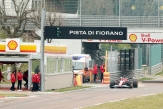
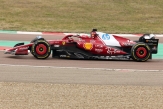
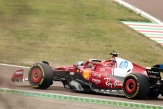

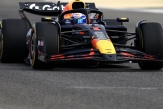
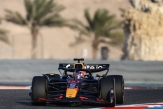
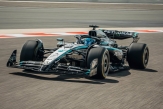
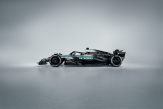
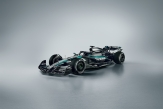
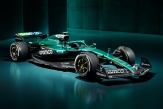
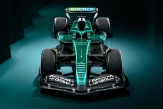
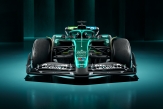
.jpg)
.jpg)
.jpg)
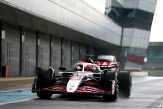
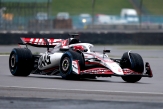
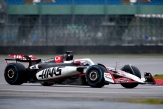
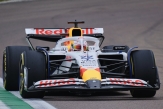
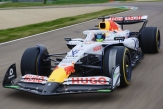
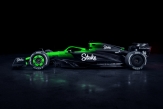
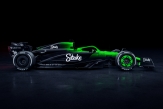

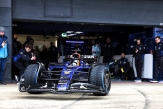
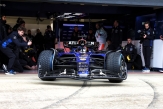
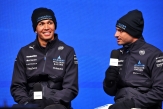

02/12/2025 от Огнян Тенчев (drJeckyll), няма коментари